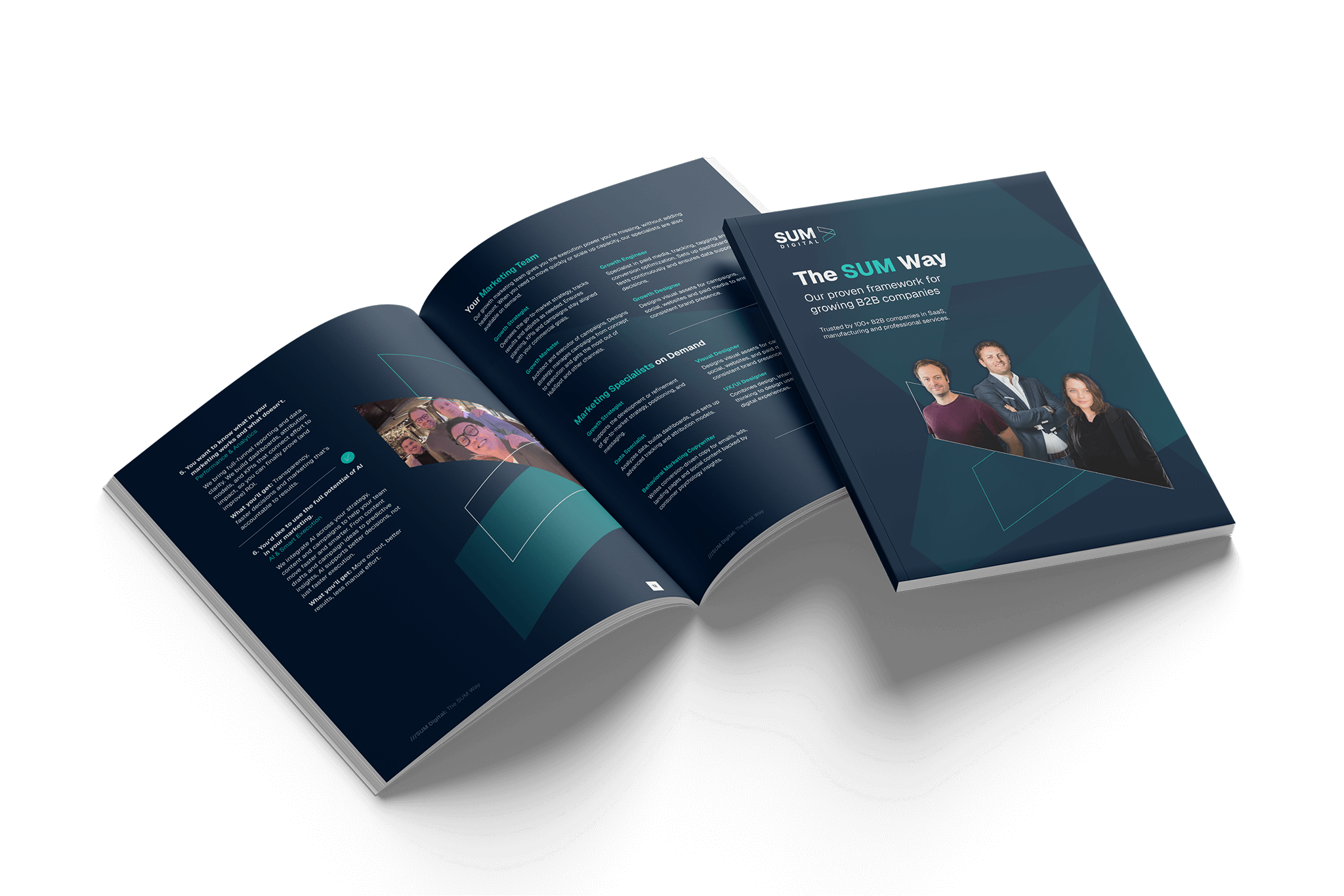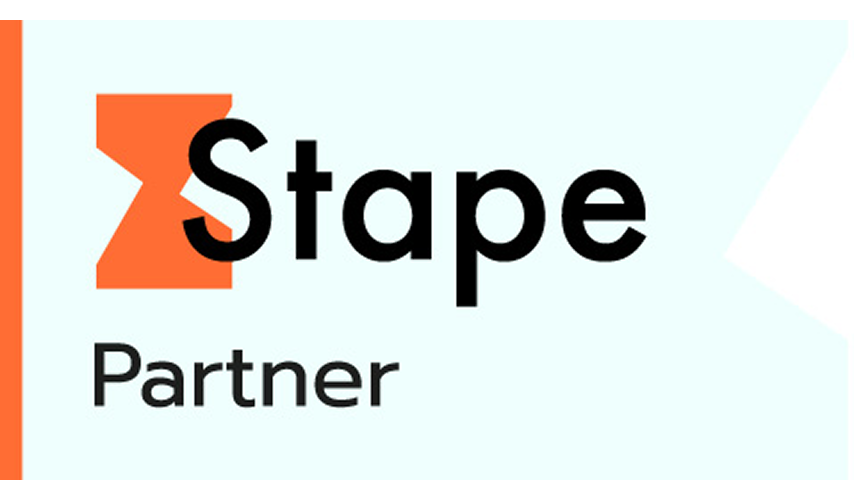Are you trying to decide which content management system (CMS) is the best fit for your website? With so many options available, it can be overwhelming to choose the right one. In this article, we will compare three leading CMS platforms: HubSpot CMS, WordPress, and Webflow. By exploring the features, functionality, and value each platform offers, you'll gain a better understanding of which CMS aligns best with your needs.
Exploring the three leading content management systems
Before diving into the details, it's essential to have a basic understanding of the HubSpot CMS, WordPress, and Webflow. Each CMS comes with its own set of features and benefits, catering to different types of users and websites.
HubSpot CMS is a comprehensive all-in-one platform that offers not only content management capabilities but also robust marketing and sales tools. It aims to provide seamless integration between your website and marketing efforts, allowing you to create personalized experiences for your visitors.
With HubSpot CMS, you can easily create and manage your website's content, optimize it for search engines, and track its performance. The platform also offers advanced features like A/B testing, lead capture forms, and email marketing automation. Whether you're a small business owner or a marketing professional, HubSpot CMS provides the tools you need to drive growth and achieve your business goals.
Are you interested in learning more about HubSpot? Check out our detailed article on why choose HubSpot CMS.
WordPress, on the other hand, is the world's most popular CMS, powering millions of websites worldwide. It is an open-source platform known for its flexibility, extendibility, and vast plugin ecosystem. Whether you're building a simple blog or a complex e-commerce site, WordPress has the versatility to meet your requirements.
With WordPress, you have access to thousands of themes and plugins that allow you to customize your website's design and functionality. You can choose from a wide range of free and premium themes, each offering unique layouts and styles. Additionally, the plugin ecosystem enables you to add features like contact forms, social media integration, and e-commerce functionality to your site with just a few clicks.
Webflow is a relatively newer player in the CMS market but has quickly gained popularity due to its powerful visual design capabilities and code-free development environment. It offers unparalleled control over every aspect of your website's design, making it a favorite among web designers and developers.
With Webflow, you can create stunning, responsive websites without writing a single line of code. The platform's intuitive visual editor allows you to design and customize every element of your site, from typography and colors to animations and interactions. You can also take advantage of Webflow's built-in CMS features, which enable you to create dynamic content and manage it with ease.
Furthermore, Webflow offers a hosting solution that ensures fast and reliable performance for your website. You don't have to worry about server maintenance or security updates; Webflow takes care of everything, allowing you to focus on creating exceptional web experiences for your audience.
Understanding the key features and functionality of HubSpot CMS
HubSpot CMS goes beyond traditional content management by offering a suite of marketing and sales tools integrated seamlessly into the platform. From lead generation to customer relationship management, HubSpot CMS empowers businesses to create highly personalized and optimized experiences for their visitors.
One notable feature of HubSpot CMS is its content personalization capabilities. By leveraging user data and segmentation, you can deliver tailored content to specific audiences, enhancing engagement and driving conversions. For example, imagine you have an e-commerce website that sells clothing for both men and women. With HubSpot CMS, you can create personalized landing pages for each gender, showcasing products that are most relevant to them. This level of personalization not only improves the user experience but also increases the likelihood of a purchase.
Additionally, HubSpot CMS provides powerful SEO tools, including keyword optimization, page performance insights, and automated URL mapping. These tools enable you to optimize your website's visibility in search engine results, driving organic traffic and attracting potential customers. With HubSpot CMS, you can conduct keyword research to identify the most relevant and high-performing keywords for your industry. You can then seamlessly integrate these keywords into your content, meta tags, and URLs, ensuring that your website ranks higher in search engine results.
Furthermore, HubSpot CMS offers integrated marketing and sales automation. This means that you can streamline your marketing and sales processes by automating repetitive tasks and workflows. For instance, you can set up automated email campaigns to nurture leads and guide them through the sales funnel. By automating these processes, you save time and effort, allowing your team to focus on more strategic initiatives.
Lastly, HubSpot CMS provides advanced analytics and reporting features. These features allow you to track and measure the performance of your website, content, and marketing campaigns. You can gain insights into visitor behavior, conversion rates, and engagement metrics, enabling you to make data-driven decisions to optimize your marketing efforts. With HubSpot CMS, you can easily generate comprehensive reports that provide a holistic view of your website's performance, helping you identify areas for improvement and capitalize on successful strategies.
- Content personalization for enhanced user experience
- Robust SEO tools for maximum visibility
- Integrated marketing and sales automation
- Advanced analytics and reporting
- Flexible and customizable templates for easy website creation
- Effortless integration with other HubSpot tools for seamless workflow
- Responsive design for optimal viewing on different devices
- Secure and reliable hosting with automatic backups
- Collaboration features for efficient content creation and management
- Intuitive user interface for easy navigation and usage
- Here you can read more on why to choose for HubSpot CMS.
A comprehensive analysis of WordPress: pros, cons, and customization options
WordPress, as the most widely used CMS, offers an extensive array of features and endless customization possibilities. Its intuitive user interface and vast plugin ecosystem make it a popular choice for both beginners and experienced users.
One of the main strengths of WordPress is its flexibility. With a wide range of themes and plugins, you can easily customize the look and functionality of your website. Whether you want to create a portfolio site, an online store, or a membership community, WordPress has the resources to get you started.
WordPress provides a plethora of themes that cater to various industries and design preferences. From minimalist designs to vibrant and bold layouts, you can find a theme that aligns with your brand and captures the attention of your target audience. These themes offer customizable options, allowing you to tweak colors, fonts, and layouts to create a unique and visually appealing website.
In addition to themes, WordPress boasts an extensive plugin ecosystem. These plugins add extra functionality to your website, enabling you to integrate features such as contact forms, social media sharing buttons, search engine optimization tools, and much more. The availability of plugins ensures that you can enhance your website's performance and user experience without the need for extensive coding knowledge.
However, the abundance of options can also be overwhelming for some users. While the plugin ecosystem is a blessing, it can lead to compatibility issues and potential security vulnerabilities if not managed properly. It is essential to choose plugins from reputable sources and regularly update them to mitigate any risks. Additionally, the need for regular updates and maintenance can be time-consuming, especially for users who are not familiar with website management.
Despite these potential challenges, WordPress remains a popular choice due to its active community support. The WordPress community is vast and vibrant, with numerous forums, tutorials, and resources available to help users troubleshoot issues and learn new skills. Whether you are a beginner or an experienced user, you can find support and guidance from fellow WordPress enthusiasts.
- Flexible customization options with themes and plugins
- Extensive plugin ecosystem for added functionality
- Potential compatibility and security concerns
- Regular updates and maintenance required
Unveiling the power of Webflow: design, flexibility, and user experience
Webflow stands out from the crowd with its focus on visual design, flexibility, and user experience. It empowers designers and developers to create stunning websites without writing a single line of code.
When it comes to visual design, Webflow offers a wide range of tools and features that allow you to bring your creative vision to life. From customizable templates to a vast library of fonts and color palettes, you have the freedom to design a website that truly reflects your brand's identity. With Webflow, your website will not only be visually appealing but also highly functional.
One of the key advantages of using Webflow is its intuitive visual editor. This powerful tool allows you to build and customize your website in real-time, seeing the changes instantly. Gone are the days of waiting for the development team to implement your design ideas. With Webflow, you have full control over the look and feel of your website, making the design process faster and more efficient.
But Webflow doesn't stop at visual design. It also offers powerful responsive design capabilities, ensuring that your website looks great on any device. With the ever-increasing use of smartphones and tablets, it's essential to provide a seamless mobile experience for your users. Webflow's responsive design features make it easy to create a website that adapts to different screen sizes and resolutions, guaranteeing an optimal user experience across all devices.
For developers, Webflow provides a code export feature that allows them to fine-tune the website's HTML, CSS, and JavaScript. This gives developers full control over the codebase, enabling them to optimize the website's performance and add custom functionality. Whether you're a designer who wants to collaborate with developers or a developer who wants to have complete control over the code, Webflow offers the flexibility you need.
- Visual design capabilities without coding
- With Webflow, you don't need to be a coding expert to create visually stunning websites. Its comprehensive set of design tools and features empowers you to bring your creative ideas to life without writing a single line of code. From customizable templates to a vast library of fonts and color palettes, Webflow provides everything you need to design a website that stands out from the crowd.
- Real-time customization and instant previews
- One of the most significant advantages of using Webflow is its intuitive visual editor, which allows you to make real-time changes to your website and see the results instantly. This eliminates the need for back-and-forth between design and development teams, making the website creation process faster and more efficient. With Webflow, you can experiment with different design elements, layouts, and content without any delays, ensuring that your website meets your exact specifications.
- Responsive design for a seamless mobile experience
- In today's mobile-first world, having a responsive website is crucial. Webflow understands this and offers powerful responsive design capabilities. With Webflow, you can create a website that automatically adjusts its layout and content to fit different screen sizes and resolutions. This ensures that your website looks great on smartphones, tablets, and desktop computers, providing a seamless user experience across all devices.
- Code export for developer control
- While Webflow allows you to design and customize your website without coding, it also caters to developers who want full control over the codebase. With Webflow's code export feature, developers can access the underlying HTML, CSS, and JavaScript of the website. This gives them the freedom to fine-tune the code, optimize performance, and add custom functionality. Whether you prefer to work with the visual editor or dive into the code, Webflow offers the flexibility to accommodate your needs.
SEO and marketing capabilities: How HubSpot CMS, WordPress, and Webflow stack up
When it comes to SEO and marketing capabilities, all three CMS platforms offer various tools and features to help you optimize your website for search engines and reach your target audience effectively.
HubSpot CMS, as a complete inbound marketing solution, offers robust SEO tools, including on-page optimization, XML sitemap generation, and SERP tracking. With HubSpot CMS, you have the power to optimize your website's content, meta tags, and URLs to improve your search engine rankings. The XML sitemap generation feature ensures that search engines can easily crawl and index your website's pages, helping you achieve better visibility in search results. Additionally, HubSpot CMS seamlessly integrates with HubSpot's marketing automation and CRM tools, allowing you to create personalized marketing campaigns and track conversions effectively. This integration enables you to nurture leads and guide them through the sales funnel, ultimately driving business growth.
WordPress, with its vast plugin ecosystem, provides endless options for SEO optimization. One of the most popular WordPress plugins, Yoast SEO, offers comprehensive SEO features that can elevate your website's search engine performance. With Yoast SEO, you can optimize your website's meta tags, generate XML sitemaps, and analyze your content for SEO best practices. The plugin also provides valuable insights and suggestions to improve your website's visibility in search results. Furthermore, WordPress allows for easy integration with other marketing tools and platforms, giving you the flexibility to expand your marketing capabilities and reach a wider audience.
Webflow, while not as focused on SEO as the other two CMS platforms, provides the essentials for on-page optimization. With Webflow, you have control over important SEO elements such as meta tags, URL structures, alt text for images, and schema markup. These features allow you to optimize your website's content and provide search engines with valuable information about your web pages. However, if you require advanced SEO features, such as advanced keyword research or backlink analysis, you might need to rely on external tools and plugins to supplement Webflow's capabilities.
When considering which CMS platform to choose for your SEO and marketing needs, it's important to evaluate your specific requirements and goals. HubSpot CMS offers an all-in-one solution for inbound marketing, with powerful SEO tools and seamless integration with marketing automation and CRM tools. WordPress, on the other hand, provides a flexible and customizable platform with a vast plugin ecosystem, allowing you to tailor your SEO strategy to your unique needs. Webflow, while not as feature-rich in terms of SEO, still provides the essential tools for on-page optimization and offers a user-friendly interface for website creation and management.
In conclusion, each CMS platform has its strengths and weaknesses when it comes to SEO and marketing capabilities. Whether you choose HubSpot CMS, WordPress, or Webflow, it's crucial to leverage the available tools and features to optimize your website for search engines and effectively reach your target audience.
Ease of use and user-friendliness: Which CMS is the most intuitive?
When evaluating CMS platforms, ease of use and user-friendliness play a crucial role, especially for beginners and users without coding knowledge. Let's assess the user experience provided by each CMS.
HubSpot CMS prides itself on being user-friendly, with an intuitive and straightforward interface. Its drag-and-drop editor and visual content creation tools make it easy to create and manage web pages without any coding skills. Additionally, HubSpot offers comprehensive documentation and support resources to help users get up to speed quickly.
WordPress, while initially designed for bloggers, has evolved into a robust CMS suitable for various types of websites. Its user interface might feel overwhelming for absolute beginners, but once you get familiar with the basics, managing your site becomes easier. Moreover, WordPress benefits from an extensive user community, meaning there's no shortage of tutorials, guides, and plugins to assist you.
Webflow's focus on visual design makes it a user-friendly choice for designers and developers looking for a code-free approach to building websites. The user interface is clean and intuitive, and the visual editor allows for real-time customization. However, it should be noted that Webflow's learning curve might be steeper for non-designers, as it offers more flexibility at the expense of simplicity.
Integrations and plugins: Extending the functionality of your CMS
The ability to integrate with other tools and platforms is vital for extending the functionality of your CMS. Let's explore the compatibility of HubSpot CMS, WordPress, and Webflow with external integrations and plugins.
HubSpot CMS offers a vast array of integrations with popular marketing, sales, and customer relationship management tools. It seamlessly integrates with the entire HubSpot suite, providing a unified platform for all your marketing efforts. Additionally, it supports integrations with various third-party applications, allowing you to connect your website with your preferred tools.
WordPress's strength lies in its plugin ecosystem, with over 58,000 plugins available. Whatever functionality you require, chances are there is a plugin that can fulfill your needs. Whether it's e-commerce, SEO, analytics, or social media, WordPress provides countless options to enhance your website's capabilities.
Webflow's integration options are more limited compared to HubSpot CMS and WordPress. While it allows for integration with popular tools like Google Analytics, MailChimp, and Zapier, the choices are not as extensive as the other two platforms. However, Webflow's flexibility allows developers to create custom integrations using APIs and Webhooks.
Pricing and cost comparison: Which CMS offers the best value for money?
When deciding on a CMS, pricing is an important consideration. While the specific costs may vary depending on your needs, let's compare the pricing structures of HubSpot CMS, WordPress, and Webflow to determine which offers the best value for money.
HubSpot CMS operates on a subscription model, with pricing tiers based on website traffic and additional marketing features required. While HubSpot's pricing may be higher than some other CMS options, it is important to consider the comprehensive marketing tools bundled with the platform. For businesses looking to unify their marketing efforts, HubSpot CMS provides excellent value for money.
WordPress, being an open-source CMS, is free to use. However, there are costs associated with domain registration, web hosting, premium themes, and premium plugins. The overall cost will vary depending on your specific requirements, but it is generally considered a cost-effective option, particularly for smaller websites and personal blogs.
Webflow offers a tiered pricing structure, ranging from a free plan to more advanced options for professional users. The free plan is a great starting point for individuals and small projects, but the paid plans unlock additional features, enhanced support, and increased project limits. From a value perspective, Webflow sits in the middle-ground, offering powerful design capabilities at a reasonable cost.
Making the right choice: Factors to consider when choosing your CMS
Now that we have examined the key features, functionalities, and pricing of HubSpot CMS, WordPress, and Webflow, it's time to recap and consider the factors that should influence your decision.
For businesses looking for an all-in-one marketing solution with robust content personalization capabilities, integrated sales and marketing automation, and advanced analytics, HubSpot CMS is a strong contender. Its pricing may be higher, but the value it provides outweighs the cost for businesses invested in inbound marketing.
WordPress, with its vast plugin ecosystem and flexible customization options, is an ideal choice for those who value versatility and want full control over their website. It is a popular choice for bloggers, e-commerce sites, and small businesses looking for a cost-effective solution.
Webflow targets web designers and developers who prioritize visual design capabilities and flexibility. If you have design skills or prefer a code-free approach to website development, Webflow empowers you to create stunning websites without technical limitations.
Ultimately, the choice between HubSpot CMS, WordPress, and Webflow depends on your specific needs, skills, and budget. Evaluating your requirements, understanding the strengths and weaknesses of each CMS, and taking advantage of free trials or demos will help you make an informed decision.
Remember, your website is an essential component of your overall online strategy. Choosing the right CMS will not only streamline your content management but also uncover new possibilities for growth, engagement, and success.
Are you interested to see how we can support your growth journey, including choosing the right CMS that aligns with your business goals? Schedule a free Discovery Call today.

The SUM Brochure
Discover how we think, work and deliver. Inside, you'll find out how our way of working and the SUM Growth Model helps businesses like yours achieve results and grow predictably.






